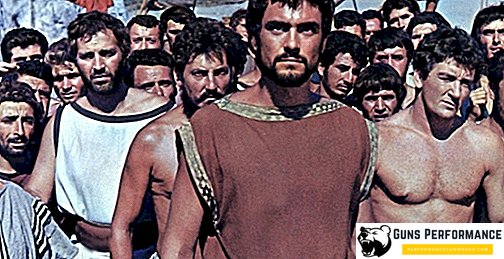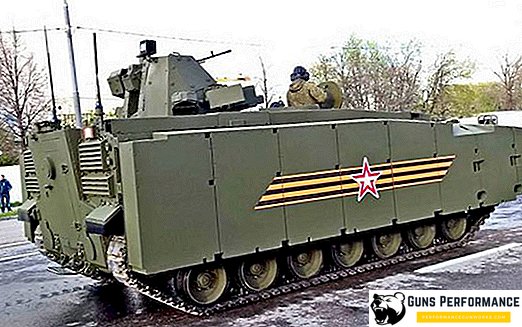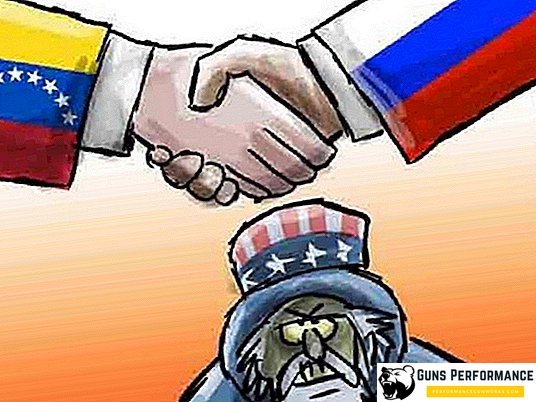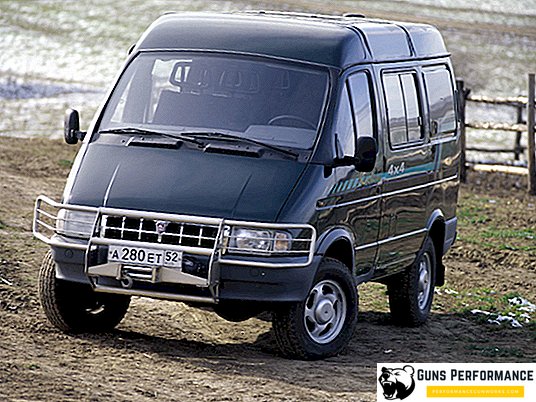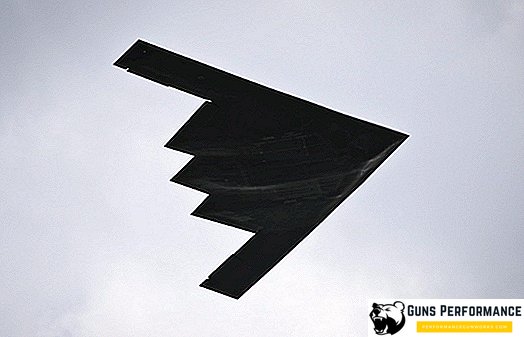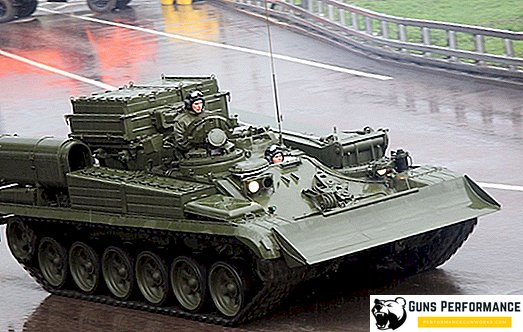
Su-9 is a Soviet supersonic interceptor aircraft developed by the Sukhoi Design Bureau in the mid-50s. The aircraft was in service with the Soviet air force for about twenty years: its first flight took place in 1957, and the vehicle was decommissioned only in 1981. It was replaced by more modern MiG-23 and Su-15 vehicles. Su-9 is one of the first domestic fighter with a delta wing. Su-9 was the first fighter in the world, which was part of the interception complex.
The Su-9 fighter-interceptor took an active part in the confrontation between the two superpowers during the Cold War: these machines defended the Soviet sky in the country's anti-aircraft forces. From the beginning of the 60s, the Su-9 was used to combat the American high-altitude reconnaissance aircraft Lockheed U-2, which regularly flew over the USSR. The Su-9 fighter took part in the famous U-2 story, piloted by Henry Powers, but could not destroy the intruder.
The Su-9 was launched at two plants: No. 153 in Novosibirsk and No. 30 in Moscow. Mass production continued until 1962, a total of about 1,150 aircraft were produced. On account of the fighter several world records of speed and height.

The history of the creation of the Su-9 interceptor aircraft
The development of a new high-speed and high-altitude fighter-interceptor began in 1953. On July 15, a government decree was issued on the creation of new jet fighters with a triangular and swept wing. In this period, after a three-year break, the Sukhoi Design Bureau was restored, and its specialists immediately joined the work on new machines.
Also in 1953, work began on the creation of the new TRDF AL-7 engine, which would later be installed on Su-7 and Su-9 fighters. The development of these two aircraft went to Sukhoi Design Bureau in parallel. The following requirements were set for the future of the Su-9: a maximum speed of at least 1900 km / h, a ceiling of 19-20 km, a climb time of 15 km - 2 minutes, a flight range at an altitude of 13-15 km - 1600 km.
At this time, the world entered into another period of confrontation between the two superpowers. The Soviet Union was a completely closed state, which very zealously protected its military secrets. The time of spy satellites has not yet come, so the Americans used spy planes to gather information, who invaded Soviet airspace at high altitudes and carried out reconnaissance with impunity. So it was for the time being.
Naturally, the Soviet leadership was aware of the flights of American aircraft and the fact of regular violation of the state air borders could not but cause him serious concern. However, for a long time the Soviet air defense system could not do anything with the violators: the U-2 aircraft flew at altitudes unattainable for Soviet fighters and anti-aircraft missiles.
In 1956, after an extended meeting with the participation of the military and representatives of the military-industrial complex of the country, a decree was issued in which the aviation design bureau was tasked to increase the height of the fighter jets as soon as possible. Designers of the Sukhoi Design Bureau were instructed to raise the ceiling of the Su-7 and Su-9 fighters under development to 21,000 meters. To this end, it was proposed to install a modified AL-7F1 engine on the aircraft and remove a number of systems from the fighters.
Installing new engines with slightly different sizes and characteristics required changes to the design of the aircraft. The design of the modernized machine was completed at the end of 1956, after which the documentation was transferred to production.

The first flight of the Su-9 fighter took place on October 10, 1957. On April 16, 1958, a government decree appeared on the creation of an interception complex on the basis of the Su-9 fighter, which consisted of the aircraft itself, armed with guided missiles, and the ground-based guidance and control system Vozdukh-1. It was a network of ground-based radar stations, whose task was to detect the intruder. Then the data on his flight speed, altitude and course were downloaded to the computer, which gave the data necessary for a successful interception. At a distance of nine kilometers, the Su-9 was supposed to capture the target of an onboard radar.
The Su-9 was accepted into service in 1960, and the machine began to arrive in combat units a year earlier. By mid-1960, this aircraft was already in service with thirty aviation regiments. Su-9 was operated only by the Soviet air force, this machine was not exported.
Su-9 had unique speed characteristics for its time (2250 km / h) and high-altitude (20 thousand meters) characteristics, so it was difficult for pilots to master it. The launch of guided missiles at high speeds required real skill from pilots. In addition to the fighter, it was run-in and the first Soviet helmet-type helmet GSH-4, which at first caused a lot of complaints from pilots. The new car had excellent flight characteristics, but, despite this, it had features in the management. In addition, the fighter was still "raw" and for its revision special brigades were created at the factory, which fixed the plane’s malfunctions right in the front-line units. Only by 1963 the main problems of the Su-9 were solved.
On May 1, 1960, one of the most famous episodes of the Cold War took place: another U-2 reconnaissance aircraft, piloted by Henry Powers, invaded Soviet airspace. The intruder was shot down by the Dvina anti-aircraft missile system S-75, but few people know that Soviet fighters participated in the interception of the American aircraft. One of them was the Su-9, piloted by pilot Mentyukov. The car was distilled from the factory to the line unit and for this reason did not have weapons. Moreover, the pilot did not have a hull suit. The pilot received an order to ram an enemy aircraft, which, in the absence of a pressure suit, meant for him certain death. However, the ram was never performed due to the failure of the on-board radar.
By the way, that day there was another disaster. An anti-aircraft missile launched on U-2 (there were eight of them altogether), the MiG-19 interceptor was shot down (the pilot was killed), the second MiG-19 only managed to escape from the rocket by a miracle.
The Su-9 also participated in other episodes related to the interception of violating aircraft, shot down high-altitude aerostats with spy equipment that the Americans launched over Soviet territory.
Operation of the Su-9 lasted until 1981, after which the car was removed from service.
The Su-7, which was practically a twin of the Su-9, was considered one of the most emergency aircraft in the Soviet Air Force. It is with this fighter associated with the largest number of disasters. Su-9 was a more reliable machine, easy to operate with excellent flight performance. However, this aircraft did not forgive pilots dismissive attitude. Up until the end of the 60s, the Su-9 interceptor was the highest-altitude and fastest aircraft of the Soviet Air Force.

Description of the design of the Su-9
Su-9 is made according to the classical aerodynamic design, with one engine, a semi-monocoque fuselage design and a nose air intake. It should be noted that the fuselage and tail assembly of the Su-9 is completely analogous to what was used on the Su-7. The difference between the aircraft was only in the form of a wing: the Su-9 had a delta wing, and the Su-7 was swept. The crew of the fighter - one person.
The fuselage of the car can be divided into three parts: the nose, the compartment of the pressurized cabin and the tail compartment. In the nose of the aircraft was an air intake with a central movable cone. Four anti-surge flaps were also located here. Behind the nose part there was a pilot's cabin and a niche of the front landing gear, which was located under it. The pilot's cockpit lantern consisted of an armored visor and a sliding part made of heat-resistant organic glass. An ejection pilot seat was installed in the cockpit.

Behind the pilot cabin was located instrumentation, behind which were the fuel tanks of the car. In the rear of the aircraft was the engine compartment and tail, which consisted of a keel with a rudder and a full-circle stabilizer.
The wing was attached to the fuselage at four points, its mechanization consisted of a flap and aileron.
Su-9 tricycle landing gear, with the front pillar, which retracts forward into the fuselage niche and two main pillars retracting towards the fuselage. The fighter was equipped with a braking parachute.
Initially, the TRDF AL-7F-1 engine was installed on the Su-9, later these aircraft were equipped with the AL-7F1-100 (150 or 200) engines, which differed by increased lifespan, brought to 100, 150 or 200 hours, respectively. The AL-7F1 had an afterburner chamber and a two-position nozzle. Engine control was carried out with the help of cables, and the afterburner had electric control.
The Su-9 fuel system consisted of tanks located in the wings and fuselage. In the early series, their capacity was 3060 liters, later it was increased to 3780 liters.
The aircraft had an irreversible booster control system and a hydraulic system consisting of three independent subsystems. The cockpit was equipped with air conditioning, it kept the temperature in the cockpit from 10 to 20 degrees Celsius.

The Su-9 fighter was equipped only with rocket weapons, it consisted of four RS-2US guided missiles. The missile guidance was carried out by radio beam. Also, the aircraft could use R-55 missiles with a thermal homing head.
In the late 60s, experiments were conducted with the installation of cannon armament on the Su-9. The container with the gun was suspended instead of a single PTB, which reduced the fighter's range. Therefore, the installation of the gun on the plane is not widespread.
Characteristics of the Su-9
The following are the characteristics of the Su-9 fighter:
- wingspan - 8.54 m;
- fuselage length - 18.06 m;
- height - 4.82 m;
- wing area - 34 square meters. m;
- weight max. takeoff - 12512;
- fuel weight - 3100-3720 kg
- engine - TRDF AL-7F-1-100U;
- engine thrust at afterburner - 9600 kgf;
- Max. speed - 2120 km / h;
- practical range - 1800 km;
- Max. rate of climb - 12,000 m / min;
- practical ceiling - 20,000;
- crew - 1 person



